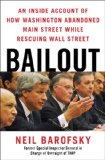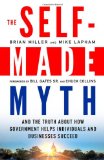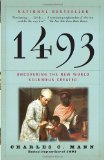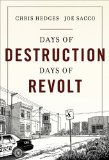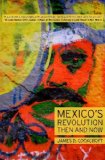The dogma. In his article, ‘The Scam Wall Street Learned from the Mafia’ (Rolling Stone, June 21, 2012), Matt Taibbi details the case of United States of America v. Carollo, Goldberg and Grimm. The case was over ten years in the making and concerns the rigging of public bids on municipal bonds, a market worth $3.7 trillion. The article reflects the liberal dogma, which Taibbi succinctly summarizes toward the end of his piece:
That, ultimately, is what this case was about. Capitalism is a system for determining objective value. What these Wall Street criminals have created is an opposite system of value by fiat. Prices are not objectively determined by collisions of price information from all over the market, but instead are collectively negotiated in secret, then dictated from above (emphases added).
Translation. The market is natural and therefore objective and just (everyone is Pareto-Clark thankful for getting exactly what they deserve). Collusion is artificial and therefore subjective and unjust (the municipalities get less than they deserve, the banks get more, and the economy gets ‘distorted’). From the viewpoint of capital as power, this claim makes no sense. There is no such thing as objective value. All value is value by fiat. And all value by fiat is value ‘from above’ – i.e., a reflection of a matrix of power (the capitalist nomos). In this sense, all the machinations on trial here sum up to one aspect of a much larger architecture of power and sabotage. The basic interest rate on which the fraud is superimposed is already a distillation of all the differential power processes in the world – which, together, form the normal rate of return. Indeed, the interest rate that emerges from the fraud is itself fed into that very normal rate of return….
How does the scam work? According to Taibbi, the big banks (providers) collude with the auctioneers to divvy up the business between them and rip off the issuers (towns and cities). To illustrate: A municipality borrows money for a public project, say $10 million. The project is to last five years, and in the meantime the municipality wants to invest the money that is yet to be spent. The law requires the municipality to get competitive bids from at least three banks and choose the bank that offers the highest interest. The banks, however, collude to limit the competitive bidding. Every bank secretly retains its own set of auctioneers to whom it pays money (directly through bribes or indirectly through unrelated fees, other business, etc.). The auctioneer shows his retainer the highest offer he got from the other banks (allowing the bank to have the ‘last look’). Knowing its competitors’ bids, the bank in question ups its own offer by a few basis points (cents) above the highest bid, thus winning the auction. Everyone in the business participates in this game, as do the politicians who are bribed to look the other way.
This business reputedly started in the late 1990s. According to Taibbi, it is very much a case of Wall Street imitating the public-contract rigging practices of the Mafia (which in turn originated when the Mafia imitated the rigging practices of Rockefeller and his legions of acolytes). Nobody thinks much of this rigging. It is the way of doing business (as the Saudi oil minister Ali Al-Naimi once put it, ‘the price is determined by the market, what we try to do is to make the market balanced … to get the market to the normal equilibrium and the price will take care of itself’). The defence’s argument in the case was very much along those lines. This is a complicated business – certainly more complicated than fixing a car or a fridge – it argued; and just as we don’t grill a good mechanic on every cent on his bill, there is no reason to do so with good bankers.
How big is the ‘scam’? The most interesting question, though, remains unanswered: how much money has been scooped this way? Taibbi doesn’t dare to estimate. But we can try to ballpark the annual numbers by multiplying the ‘normal rig’ – say 5 basis points, or 0.0005 – times the value of outstanding municipal bond – roughly $3.7 trillion in 2011. This multiplication yields about $1.85 billion in annual rigging profit on new and existing bonds. Now, according to Datastream, net banking profit in 2011 was $43 billion. Assuming an effective corporate tax rate of 20% implies about $54 billion in pretax profit. And since all profit is rigging of a sort – ‘profit by fiat’, to paraphrase Taibbi’s terminology – we can estimate that, in 2011, municipal rigging amounted to about 3.4% of total bank rigging.
0 2 1 3

